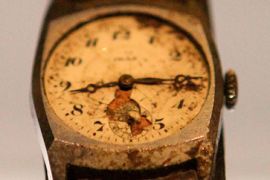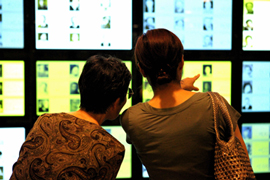Remembering Hiroshima
Survivors hope this year’s memorial signals progress in the denuclearisation campaign.

 |
| Masahiro Kunishige was 14 years old when the Hiroshima bomb was dropped |
One of the most popular pieces on display at Hiroshima’s Peace Memorial Museum is a wristwatch; its hands frozen at 8:15, the exact moment in 1945 that an American B-29 bomber dropped its atomic payload over the city.
Survivor Masahiro Kunishige has long felt that progress in creating a world free of nuclear weapons was, much like the watch, halted.
That is why he, unlike other survivors, known in Japan as the Hibukasha, chose for years not to speak about his personal ordeal.
“The Hibukasha’s campaign to denuclearise lacked momentum,” he says. “But now the US president has expressed concerns and goals. That has changed everything.”
Turning point
For Kunishige, Barack Obama’s pledge, made last spring, to work to rid the world of its nuclear weapons stockpile was a turning point. It convinced Kunishige, that he too should start publicly speaking out.
“I used to be filled with bitterness, and wanted retribution … I now believe working to rid the world of nuclear weapons is the best way to find that retribution,” he says.
Kunishige was just 14 years old when the bomb was dropped. He and his classmates were tending to a wheat field when they were hit by a white flash. Those who awoke found that much of their flesh had literally melted away.
“We had to scrape off what remained. It felt like the top of a can, slicing through your flesh. It was so painful.”
As Kunishige walks the grounds of the 30-acre Peace Memorial park, he thinks less of the past; his mood is one of determined optimism.
For the first time, the US and its second world war allies, France and Britain, will send delegations to the annual memorial.
“It is a small, but significant step forward,” says Kunishige.
The arguments in the US against attending have often been that it is “politically incorrect” for allied nations who supported the bombings to be there. More hawkish defenders have insisted that visiting would lead people to forget that Japan was the aggressor, not the victim, in that war.
For image-conscious political strategists, the strongest argument for not having a presence has always been the quandary of contradiction; how to attend a ceremony dedicated to eliminating nuclear weapons, when ones nation itself continues to carry them.
Obama’s pledge not only addressed such a concern, but has given this ceremony, Kunishige believes, greater meaning.
Nuclear neighbours
 |
| The “Atomic Bomb Dome” was the only building in the epicenter to withstand the atomic blast |
Ban Ki-moon will also mark a milestone as the first secretary-general of the UN to attend. Upon arriving in Japan on Tuesday his words were ones of urgency.
“I will visit Nagasaki and Hiroshima to send a very important and strong message to the world that the nuclear threat is real and that we must do everything we can to build on the current global momentum towards the nuclear weapon-free world,” he said.
But no one is under any illusion here. There are more than 25,000 nuclear weapons in existence and many factors could stall that momentum.
Just across the water from Japan is an ever-present example.
The latest word from military analysts is that North Korea may be about to conduct yet another nuclear test. And unlike the previous two, experts say this one could involve a nuclear weapon small enough to be placed on a warhead.
Once weaponised, few expect the country will ever willingly give up such technology.
The spectre of a nuclear-armed North, under the direction of an ageing, and some fear, increasingly unstable dictator, has concerned its neighbours.
Up until now, South Korea and Japan have relied on what is known as the US nuclear umbrella, relying on the US’ arsenal for protection. But in recent days, US officials have begun quietly expressing concerns that its ally in the region, South Korea, may be considering developing its own atomic weapons.
Deterrence
 |
| Two women look at a wall of digital pictures of some of the 140,000 people killed in Hiroshima |
“Deterrence” has often been the reason given for developing nukes. It is a view the UN secretary-general has tried to debunk.
“Nuclear disarmament is often dismissed as a dream, when the real fantasies are the claims that nuclear weapons guarantee security or increase a country’s status and prestige,” Ban said.
“The more often countries make such claims, the more likely it will be that others will adopt the same approach. The result will be insecurity for all.”
Tadatoshi Akiba, Hiroshima’s three-term mayor, wants Japan to take the lead in denuclearisation, saying it is natural, considering the country was the first to experience its horrific use.
During the anniversary ceremony Akiba is expected to call on national leaders to officially legislate the country’s three non-nuclear principles set out after the second world war – no production, no possession and no introduction of nuclear weapons onto Japanese territory.
All eyes will be on Naoto Kan, the Japanese prime minister, whose speech follows Akiba’s.
The mayor, who recently won an international award for his efforts on nuclear disarmament, believes the voices of the world’s citizens are becoming the greatest force in the movement.
At 79, Kunishige says he knows he does not have much time left. He is devoting his remaining days to being one extra voice.
He says: “I am sure it will never happen in our lifetime or for a very long time for that matter, but I believe [denuclearisation] will happen. Maybe in our grandchildren’s generation.”